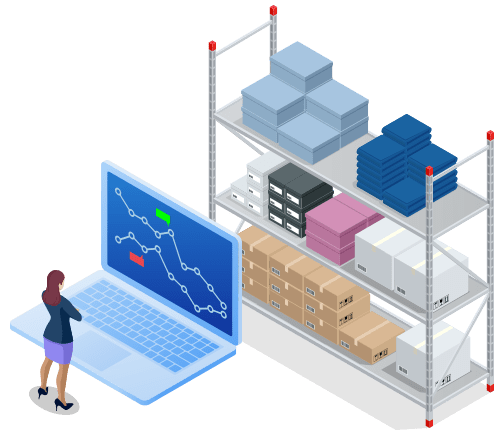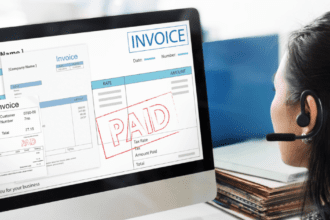Are you a digital marketer? Do you know why most digital marketer fails in bringing the desired results? That’s because they spend clients half the money on advertising. That’s why 90-98 percent of website visitors leave without becoming a lead or customer. Why the visitors skip, and why they didn’t make any action the reason remains unknown.
That’s where Conversion Rate Optimization, adding just numbers to the website isn’t enough, you need customers. In today’s digital era, attracting users to websites is easy. But the real challenge lies in converting visitors into customers.

By implementing effective Conversion Rate Optimization techniques, you can boost your website performance, enhance user experience, and ultimately turn your users into potential clients. So don’t wait discover the power of CRO and unlock website’s true potential.
What is Conversion Rate Optimization?
Creating a business website, and adding content and images to it won’t move the needle for your business. To make your business website successful you need effective techniques and strategies that improve the way your website visitors turn into potential clients.
Conversion Rate Optimization (CRO) is a technique used to make a website or online platform more effective in turning visitors into customers or achieving specific goals. It involves making small, smart changes to the website to encourage more people to take desired actions, like making a purchase, signing up for a newsletter, or filling out a form.
Instead of trying to attract more visitors, CRO focuses on maximizing the value from existing traffic. By analysing user behavior, studying data, and conducting tests, businesses can identify what elements on their website are hindering conversions and what can be improved to boost them. This way, they can create a better user experience, gain more customers, and increase their overall success. It’s all about making the most out of the people already interested in the website, turning them into loyal customers, and achieving higher results without having to attract more traffic. Understanding about CRO can be tough, if you aren’t aware of SEO. Want to learn about SEO basics, ‘’ The Basics of SEO: A Beginner’s Guide to Digital Marketing’’.
Few ways by which you can increase CRO: –
· Clear and compelling CTA
· Streamlined user experience.
· Social proofs and testimonials
How Conversion Rate Optimization Drives Growth
Conversion Rate Optimization (CRO) is a crucial aspect of any business’s online success. It refers to the systematic process of increasing the percentage of website visitors who take the desired action, such as making a purchase, signing up for a newsletter, or filling out a contact form. The significance of CRO lies in its ability to maximize the efficiency of a website or landing page, ultimately leading to higher profits and better return on investment. By constantly analysing user behaviour, testing various elements, and making data-driven improvements, businesses can enhance their conversion rates and ensure their online efforts are more productive and successful.
How CRO impacts the bottom line
By enhancing a company’s online visibility, conversion rate optimisation (CRO) increases revenue. CRO strives to raise the proportion of website users that engage in actions, such completing purchases or signing up for services, which directly affects business profitability by driving up sales without raising marketing costs and resulting in a higher return on investment (ROI). In addition, CRO improves user experience, customer satisfaction, stimulates repeat business, and promotes brand loyalty.
Businesses that have effective CRO strategies continually improve their websites to be competitive in the online market. All things considered, CRO’s data-driven methodology equips businesses with the tools they need to operate more successfully and effectively in the digital sphere.
Understanding Conversion Rate Optimization
In the world of online business, understanding the concept of conversion rate optimization is crucial for success. Conversion rates play a vital role in determining the effectiveness of a website in turning visitors into customers or achieving specific goals.
Whether you run an e-commerce store, offer services, or simply want to engage your audience, grasping the nuances of conversion rates is crucial to optimizing your online presence. Now lets delve into the fundamental aspects of conversion rates, explore how they impact businesses, and uncover strategies to improve them. Let’s demystify the concept of conversion rates and unlock the potential for greater success in the digital realm.
You may be wondering, ‘’What is the conversion rate of visitors to customers?’’. There isn’t any specific conversion rate. The CRO varies from industries to industries. Here is breakdown of CRO for different industries.
E-commerce 1.84% 3.71% 6.25%
Legal 1.07% 4.12% 6.46%
B2B 2.23% 4.31% 11.70%
Finance 5.01% 11.19% 24.48%
Want to calculate conversion rate for your business check online Conversion Rate Analyzer – Conversion Rate Calculator
Key Metrics to Track CRO
There are several key metrics that are crucial to track and analyse for improving the efficiency of a website or marketing campaign. Some of the essential metrics include:
· Conversion Rate (CR): Conversion rate tracks the percentage of website visitors who perform the desired action, such as making a purchase or filling out a form, It is a critical indicator of better website performance.
· Bounce Rate: This statistic shows the proportion of visitors who leave a website instantly after only looking at one page. Higher bounce rates indicates, irrelevant content and low engagement, both of which require attention.
· Click-Through Rate (CTR): CTR is a metric that expresses how many users clicked on a link or call-to-action out of all the users who viewed it. It aids companies and marketers in evaluating how well their articles or advertisements engage readers and motivate them to take action. A higher CTR shows more attention and engagement, whereas a lower CTR indicates that the link needs improvement to be more enticing and relevant.
· Average Session Duration: This statistic shows how long visitors stay on a website on average. A longer runtime implies greater interest and engagement with the content.
· Cart Abandonment Rate: This metric is used in e-commerce to determine the proportion of consumers who add items to their carts but then abandon them before checking out. Dealing with cart abandonment can boost revenue.
· Return on Investment (ROI): This statistic assesses the financial success of CRO initiatives by weighing the benefits from higher conversion rates against the expenses associated with optimization.
Challenges Faced During Conversion Rate Optimization Process
· During the Conversion Rate Optimization (CRO) process, businesses may encounter several challenges, including:
· Data Collection: Gathering accurate and relevant data about user behavior can be difficult, as it requires tracking various metrics and understanding user interactions.
· Interpretation: Analyzing data and drawing meaningful insights can be challenging, especially when dealing with complex user patterns and multiple variables.
· Testing Resources: Conducting A/B tests and experiments may require time, effort, and resources, making it challenging for some businesses, especially smaller ones.
· User Experience: Balancing CRO efforts with providing a seamless user experience can be tricky, as aggressive optimizations may impact website usability negatively.
· Identifying Priorities: Determining which elements to prioritize for optimization can be tough, as different factors influence conversion rates.
· External Factors: Market trends, seasonality, and changes in consumer behavior can impact CRO efforts, posing additional challenges.
· Alignment with Goals: Ensuring CRO aligns with broader business goals can be a struggle, as optimizing for short-term gains might not support long-term objectives.
· CRO Expertise: Having skilled professionals who understand CRO techniques and strategies is essential, but finding and retaining them can be a challenge.
How do you convert visitors to customers?
A strategy approach that focuses on engaging visitors and convincing them to perform the desired action, such as making a purchase or signing up for a service, is required to turn visitors into customers. Here are some practical methods for accomplishing this:
· Create compelling content that is of the highest calibre, is pertinent to your audience’s demands, and highlights the benefits of your goods or services.
· A call to action that is clear: Use CTAs to direct users to the desired action on your website by placing clear and alluring CTAs throughout.
· A website that is user-friendly should be simple to navigate, load quickly, and be optimised for both desktop and mobile devices to give users a seamless experience.
· Displaying customer feedback, endorsements, and case studies will help you establish credibility and trust by proving that others have benefited from your products.
· Offer Incentives: Make exclusive deals, discounts, or risk-free trials available to encourage visitors to convert to customers.
· Personalization: To make visitors feel valued and understood, customise your marketing messages and offers depending on their interests and choices.
· Use Visuals: To present your goods or services in an eye-catching and instructive manner, make use of high-quality photos, videos, and infographics. I would suggest checking Free Aesthetic templates library for some awesome visuals.
· Follow-Up: Use email marketing or retargeting advertisements as an excellent follow-up method to remind visitors of their interest and persuade them to convert.
· Trust and Security: To reassure visitors that their information is secure, display security badges, privacy policies, and secure payment choices.
· Customer service: To answer any worries or inquiries potential customers may have, offer accessible and helpful customer service.
Conclusion
In summary, perfecting the art of conversion rate optimisation (CRO) is essential for converting website visitors into devoted clients. In this blog post, we looked at some essential CRO methods, including as persuasive content, obvious calls to action, social proof, and customised experiences. Businesses acquire useful insights into the performance of their websites by comprehending the relevance of indicators like Conversion Rate, Bounce Rate, Click-Through Rate, and Average Session Duration.
I encourage all readers to implement CRO techniques and measure their success. Through A/B testing, tracking key metrics, and actively seeking customer feedback, businesses can refine their strategies and optimize their online performance. By dedicating themselves to the art of Conversion Rate Optimization, they have the potential to unlock greater conversions, improve customer engagement, and ultimately drive significant growth and success in the digital realm.
Author Bio

Priyanshu is a copywriter who loves to tune into what makes people tick. He believes in
presenting his ideas with flair and wit, which has made him an expert at standing on
stage and charming the pants off of any audience he’s faced with. Priyanshu lives for
learning as much as he can, so if you ever need help understanding something – just
ask!
Linkedin: https://www.linkedin.com/in/priyanshu-bharat-35632b115








